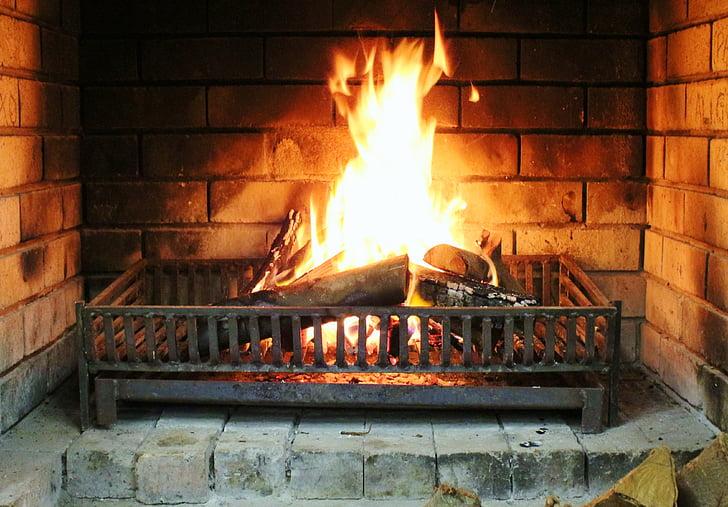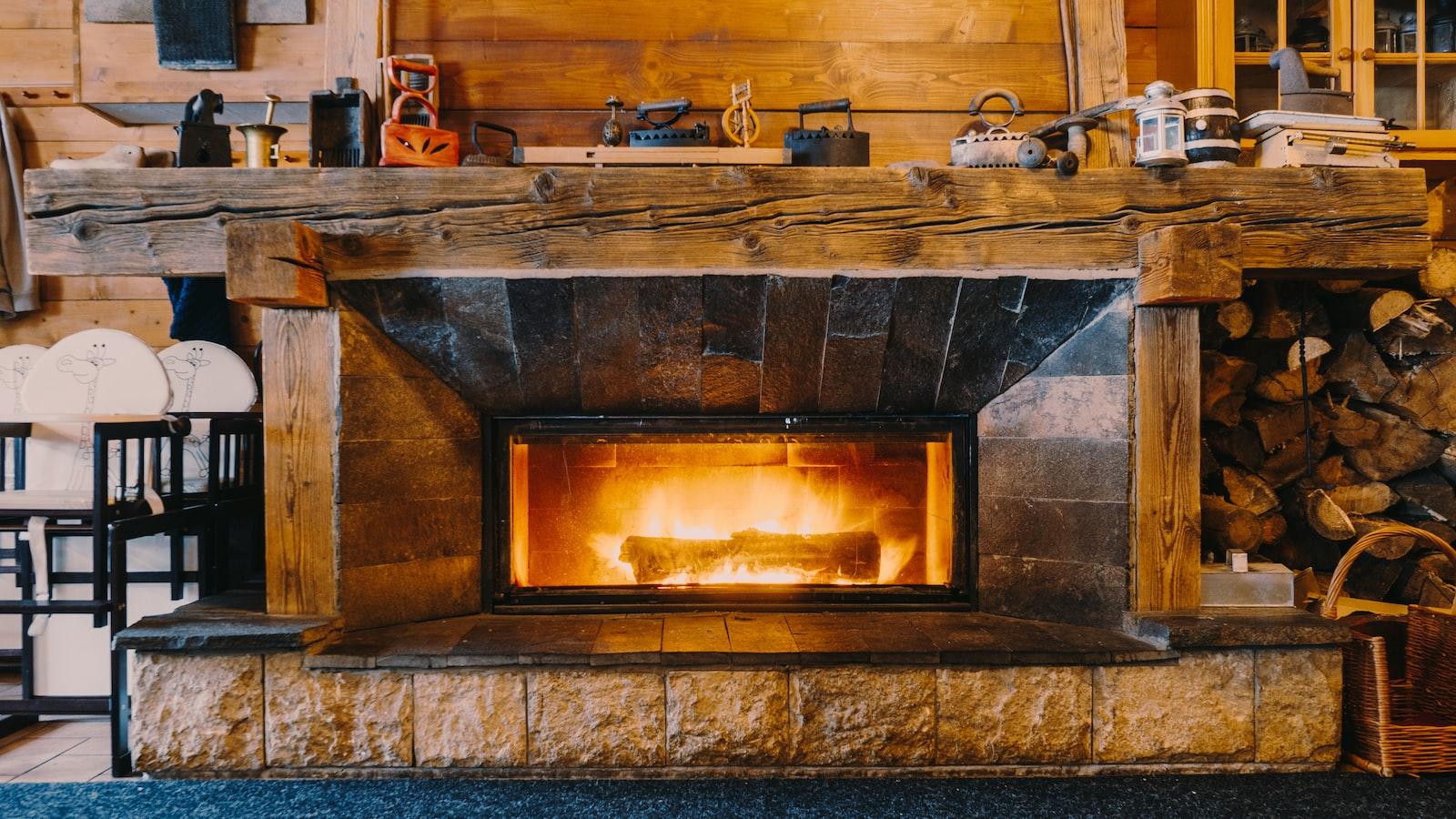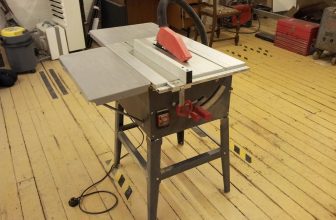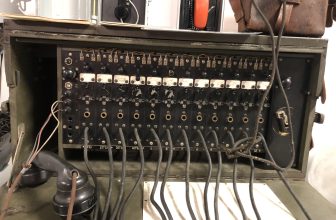
Originally posted 2024-01-17 19:16:40.
A wood burning fireplace adds warmth, charm, and a cozy ambiance to any home. Whether you’re a seasoned fireplace user or a beginner looking to utilize this traditional method of heating, understanding how to effectively use a wood burning fireplace is essential. In this article, we will provide you with a comprehensive guide on how to properly operate and maintain your wood burning fireplace, ensuring maximum comfort and safety for you and your loved ones. So grab a cup of hot cocoa and let’s explore the intricacies of harnessing the beauty and functionality of a wood burning fireplace.
Preparing the Fireplace and Safety Measures
When it comes to enjoying a cozy evening by a wood-burning fireplace, it’s important to take the necessary steps to ensure both your comfort and safety. Here are some helpful tips to prepare your fireplace and practice the necessary safety measures:
Gather Essential Supplies
Before starting a fire, make sure you have all the necessary supplies within reach. Here’s a list of must-haves:
- Firewood: Use properly seasoned hardwood for the best results.
- Newspaper or fire starters: These are essential for getting the fire started.
- Fireplace tools: A poker, brush, and tongs will help you manage the fire and keep it safely contained.
- Ash bucket: This will come in handy for storing and disposing of the ashes later.
Inspect the Flue and Chimney
Before lighting a fire, it’s crucial to inspect the flue and chimney to ensure they’re clean and safe. Here’s what you need to do:
- Open the damper to allow for proper ventilation.
- Inspect the flue for obstructions, such as bird nests or debris. Remove any obstacles carefully.
- Clean the chimney regularly to avoid the buildup of creosote, a flammable substance that can cause chimney fires.
Clear the Area Surrounding the Fireplace
Creating a safe environment around the fireplace is essential to prevent accidents. Ensure you follow these safety measures:
- Keep flammable objects, such as furniture, curtains, and rugs, at a safe distance from the fireplace.
- Install a sturdy fireplace screen to prevent embers from escaping and causing potential fires.
- Keep children and pets supervised when the fireplace is in use to avoid any accidents or burns.
Practice Safe Burning Practices
Following proper burning practices will not only ensure your safety but also optimize the performance of your fireplace:
| Type of Wood | Burning Quality |
|---|---|
| Hardwood (e.g., oak, maple, birch) | Produces long-lasting, hot fires with less smoke and creosote buildup. |
| Softwood (e.g., pine, spruce) | Provides a quick-burning fire but tends to create more smoke and creosote. Use in moderation. |
By following these steps and implementing the essential safety measures, you can confidently enjoy the warmth and ambiance of your wood-burning fireplace while ensuring the well-being of your home and loved ones.

Selecting the Right Wood for Burning
When it comes to using a wood burning fireplace, plays a crucial role in ensuring an efficient and enjoyable experience. Not all types of wood are created equal, and choosing the wrong ones can lead to poor performance, excessive smoke, and even damage to your fireplace. So how do you know which wood is best? Here are some key factors to consider when :
1. Hardwood vs. Softwood
When it comes to burning wood, hardwoods like oak, maple, birch, and ash are generally preferred over softwoods like pine, fir, and spruce. Hardwoods are denser and contain less resin, making them burn hotter and longer than softwoods. They also produce less smoke and creosote buildup, reducing the risk of chimney fires. Opt for hardwoods whenever possible.
2. Moisture Content
The moisture content of the wood is crucial for a clean and efficient burn. Green wood with high moisture levels not only burns poorly but also produces excessive smoke and creosote. It’s important to ensure that the wood you use has been properly seasoned and has a moisture content of around 20%. Seasoned wood burns cleaner, produces more heat, and creates less creosote buildup.
3. Wood Size
The size of the wood you use can affect the performance of your fireplace. It’s recommended to use wood that is cut into lengths of around 16 inches or less. Smaller pieces ignite more easily and burn more efficiently. Additionally, make sure the wood is split to allow for better airflow and quicker combustion.
4. Proper Storage
Storing your firewood correctly is essential to maintain its quality and ensure it burns well. Avoid storing wood directly on the ground, as it can absorb moisture from the soil. Instead, keep it elevated and covered to protect it from rain and snow. Remember to rotate your woodpile, using the oldest wood first to maintain its dryness and prevent decay or insect infestation.
5. Environmental Considerations
When selecting wood for burning, it’s important to consider the environmental impact as well. Opt for sustainably sourced wood or look for alternative options such as wood pellets, which are made from compacted sawdust and are a cleaner-burning alternative. Using recycled or salvaged wood can also be a more eco-friendly choice.

Building and Lighting the Perfect Fire
When it comes to creating a cozy and inviting atmosphere in your home, nothing quite beats the warm glow and crackling sound of a wood burning fireplace. However, using a wood burning fireplace requires some skill and know-how to ensure a safe and efficient burn. In this post, we will guide you through the process of in your wood burning fireplace.
Step 1: Preparing the Fireplace
Before starting a fire, it is important to make sure that your fireplace is clean and free from any debris or obstructions. Clear out any ashes from the previous fire and use a brush or vacuum to remove any soot or build-up from the walls and chimney. Ensure that the damper is fully open to allow proper airflow.
Step 2: Choosing the Right Firewood
Using the right type of firewood is crucial for a successful and efficient fire. It is recommended to use hardwoods such as oak, maple, or birch, as they burn longer and produce more heat. Avoid using softwoods like pine or spruce, as they tend to burn quickly and create excess smoke. Make sure the firewood is properly seasoned and has a moisture content below 20% for optimal burning.
Step 3: Building the Fire
Start by placing two larger logs at the back of the fireplace, leaving a small gap between them for airflow. Then, position smaller logs or split kindling vertically on top of the base logs. This allows for better air circulation and helps the fire start more easily. You can also use crumpled newspaper or fire starters to ignite the kindling.
Step 4: Lighting the Fire
Once the firewood is properly arranged, carefully light the newspaper or fire starters using matches or a lighter. Be cautious and avoid using flammable liquids to start the fire. As the kindling ignites, gradually add more logs to the fire, placing them in a pyramid shape. Make sure to leave enough space between the logs to allow proper airflow.
Step 5: Maintaining the Fire
As the fire begins to burn, monitor it to ensure a steady and even burn. Adjust the damper and use the fireplace tools to move the logs and distribute the heat evenly. Add more firewood as needed, making sure not to overload the fireplace. Regularly remove ashes to maintain proper airflow and prevent the build-up of soot.
By following these steps, you can safely and effectively use your wood burning fireplace to create a warm and inviting ambiance in your home. Remember to always prioritize safety and never leave a fire unattended. Now, sit back, relax, and enjoy the soothing glow and comforting warmth of your perfect fire.

Maintaining a Safe and Efficient Wood Burning Fireplace
A wood burning fireplace can be a cozy and soothing addition to any home. However, it is important to use it safely and efficiently. By following a few simple guidelines, you can enjoy the warmth and ambiance of a wood burning fireplace while minimizing the risks associated with improper use.
Proper Wood Selection
Choosing the right type of wood is crucial for . Use only seasoned hardwoods, such as oak or maple, that have been dried for at least six months. This ensures that the wood burns efficiently, produces less smoke, and does not create excessive buildup in the chimney.
Regular Maintenance
To keep your wood burning fireplace in optimal condition, regular maintenance is essential. Here are a few key steps to follow:
- Inspect the chimney annually and clean it as needed to remove any creosote buildup.
- Dispose of ashes properly by placing them in a metal container with a lid to prevent any risk of fire.
- Check the fireplace damper regularly to ensure it opens and closes properly.
Safe Fireplace Practices
When using a wood burning fireplace, it is important to follow these safety practices:
- Never leave a fire unattended, and make sure it is completely extinguished before leaving the room or going to bed.
- Keep flammable materials, such as curtains and furniture, at a safe distance from the fireplace.
- Use a fireplace screen or gate to prevent sparks and embers from escaping.
Efficient Use of Firewood
To achieve optimal heat output, consider the following tips when using firewood:
- Start with small pieces of kindling to establish a good fire base.
- Arrange larger logs in a crisscross pattern to allow for better airflow.
- Use a fireplace insert or heat-resistant glass doors to maximize heat efficiency.
By following these guidelines, you can enjoy the beauty and warmth of a wood burning fireplace while ensuring the safety and efficiency of your home.

Tips for Extending the Life of Your Fireplace
Using a wood burning fireplace can provide warmth and ambiance to your home during the colder months. However, it’s important to know how to properly use and maintain your fireplace to ensure its longevity and safety. Here are some :
1. Burn Seasoned Firewood
Using properly seasoned firewood is crucial for optimal performance and longevity of your fireplace. Seasoned firewood has been dried for at least six months, reducing its moisture content. This makes it easier to ignite, produces less smoke, and minimizes creosote buildup in your chimney. Avoid burning wet or green wood as it can lead to inefficient burning, excess smoke, and increased risk of chimney fires.
2. Keep Your Fireplace Clean
Regular cleaning is essential to maintain the efficiency and safety of your wood burning fireplace. Remove ashes and debris from the firebox after each use using a fireplace shovel and place them in a metal container. It’s recommended to clean your chimney once a year to remove creosote buildup. Consider hiring a professional chimney sweep for a comprehensive cleaning and inspection to prevent potential hazards.
3. Use a Fireplace Grate
Using a fireplace grate helps improve air circulation, allowing the fire to burn more efficiently and evenly. It also prevents logs from rolling out of the fireplace, reducing the risk of accidents and ash spills. Invest in a sturdy grate that fits your fireplace dimensions for optimal performance and safety.
4. Install a Chimney Cap
A chimney cap is an essential accessory that helps keep debris, animals, and rain out of your chimney. It also prevents downdrafts and can reduce the risk of sparks escaping and potentially causing fires. Install a chimney cap with spark arrestor to maximize safety and keep your chimney protected.
5. Schedule Professional Inspections
Regular inspections by a professional chimney sweep are crucial for identifying potential issues before they escalate. A chimney sweep can check for any blockages, cracks, or damaged components that might affect the performance or safety of your fireplace. Schedule inspections at least once a year or more frequently if you use your fireplace extensively.
Q&A
Q: What is a wood burning fireplace?
A: A wood burning fireplace is a type of fireplace that uses firewood as fuel to produce heat and warmth.
Q: How do I safely start a fire in a wood burning fireplace?
A: To safely start a fire, start by opening the damper to allow airflow. Crumple newspaper and place it on the grate. Add small pieces of dry kindling on top of the newspaper, and then carefully stack larger logs on the kindling. Finally, light the newspaper and let the fire gradually build.
Q: How can I ensure proper ventilation while using a wood burning fireplace?
A: Proper ventilation is crucial to ensure the efficiency and safety of your wood burning fireplace. Make sure the damper is fully open before lighting a fire. Additionally, it’s recommended to crack open a window nearby to allow fresh oxygen to enter the room and ensure the air circulation draws smoke up the chimney.
Q: What type of wood should I use in my fireplace?
A: It is recommended to use seasoned hardwood, such as oak, maple, ash, or birch. These types of wood have lower moisture content, burn more efficiently, and produce less smoke. Avoid using softwoods like pine as they tend to produce more creosote and can contribute to chimney fire hazards.
Q: How often do I need to clean my wood burning fireplace?
A: Regular cleaning is essential to maintain the efficiency and safety of your wood burning fireplace. It is recommended to have a professional chimney sweep inspect and clean your fireplace at least once a year. Additionally, it’s important to remove ashes and soot accumulation after each use, allowing for proper airflow.
Q: Are there any safety precautions I should take when using a wood burning fireplace?
A: Absolutely! Safety is paramount when operating any fireplace. Make sure to have a metal or tempered glass screen in front of your fireplace to prevent sparks and embers from escaping. Keep flammable material at a safe distance from the flames. It’s also essential to have smoke and carbon monoxide detectors installed in your home.
Q: Can I use my fireplace as the primary source of heat?
A: While a wood burning fireplace can provide warmth, it is not recommended as the primary source of heat. Fireplaces are typically meant for supplemental heating, and relying on them alone may not be efficient or cost-effective. Consider using a fireplace insert or a high-efficiency wood-burning stove for better heating performance.
Q: How can I extinguish the fire in my wood burning fireplace?
A: To properly extinguish the fire, start by removing any remaining logs using heat-resistant gloves or fireplace tools. Use a fireplace shovel to scoop ashes and embers into a metal container specially designed for ash disposal. Moisten the ashes with water and secure the container with a lid. Place the container outside, away from flammable materials, until the ashes have cooled completely. In conclusion, using a wood-burning fireplace can provide a cozy and charming ambiance to your home during the cold winter months. By following a few simple steps, you can enjoy the warmth and beauty of the crackling flames while ensuring the safety and efficiency of your fireplace. Remember to always prepare your fireplace before starting a fire, use proper firewood, and maintain regular cleaning and inspections. By practicing these guidelines, you can create a safe and enjoyable experience for you and your loved ones. Whether you’re gathering with family or enjoying quiet moments alone, a wood-burning fireplace can truly transform your living space into a haven of comfort and relaxation. So go ahead, indulge in the timeless pleasure of a wood-burning fireplace and let its natural warmth fill your home.






